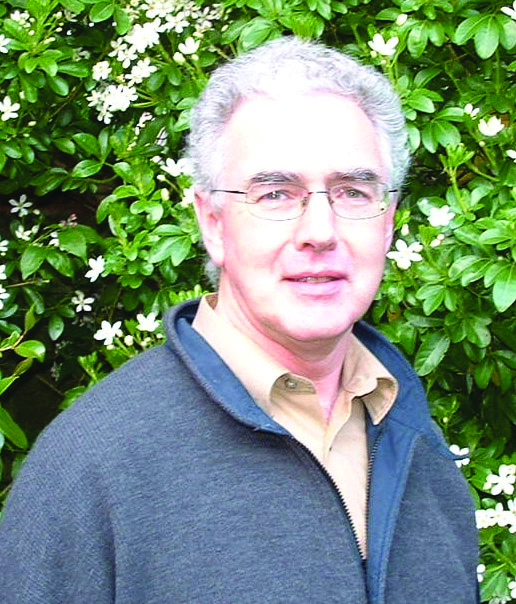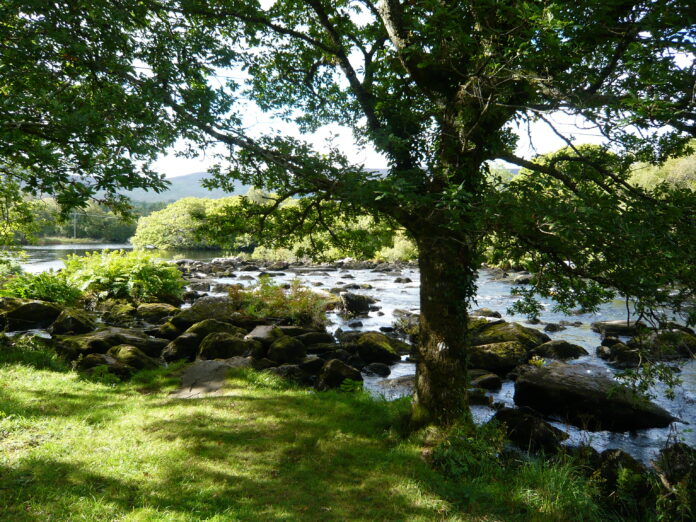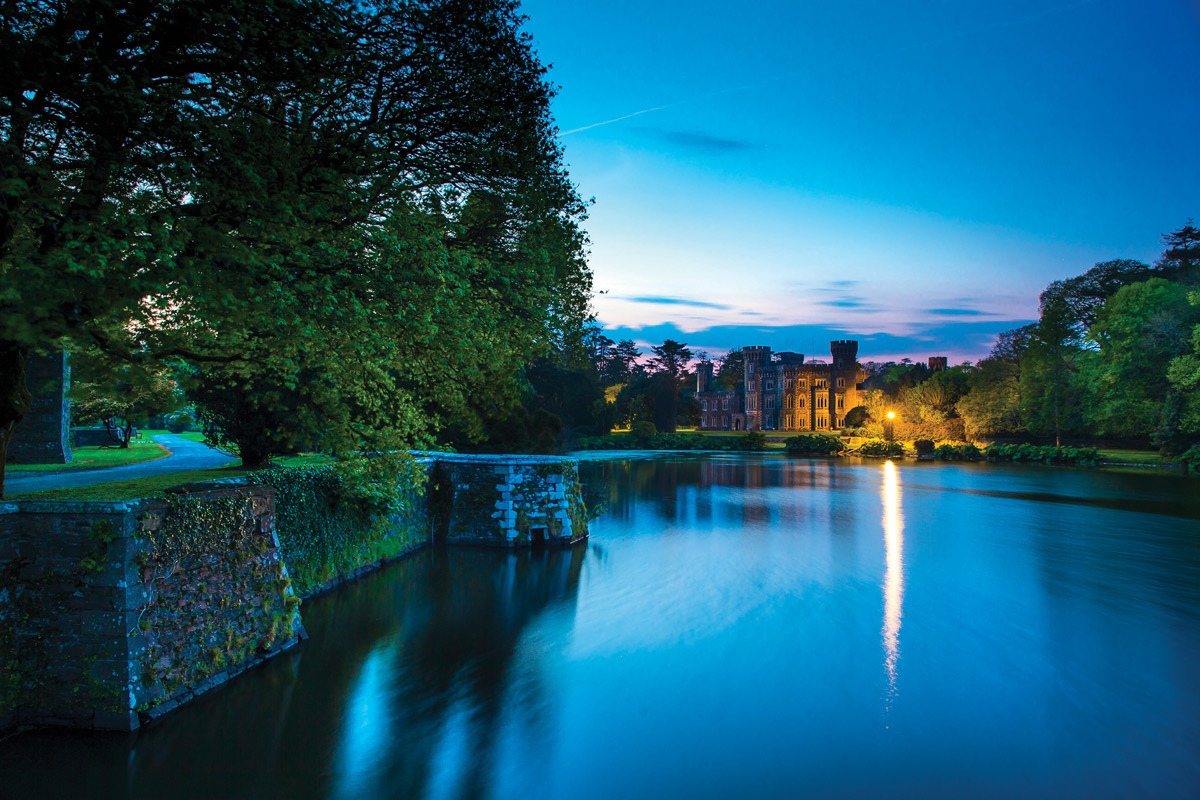Terry O’Regan celebrates and encourages outside the box thinking in our efforts to tackle climate change.
My article in part harks back to a thread running through many of the articles featured in the last issue of Horticulture Connected (Autumn/Winter 2021), notably the excellent and thought-provoking articles by John Murphy (on tackling obstacles to planting trees), Noeleen Smyth (on healing bogs), and Féidhlim Harty (on rewilding gardens); all complemented by articles from Michal Slawski, Dr. Joe Larragy and the AIPH conference report. In varying degrees, they each expressed concerns about biodiversity and global warming on patches of that great landscape patchwork that is our land and our planet.
You got a strong sense of concerned citizens, not alone thinking outside the box, but willing to venture outside their comfort zones.
I was reminiscing recently with my older brother about a 1950’s family holiday in Tramore, Co. Waterford; my rose-tinted memories called up sunny days on the fine strand, swimming through the breaking waves, followed by the noisy, exciting amusements, the penny slot machines, hot bags of vinegar-soaked chips and Jim Reeves singing about a sad phone-call; my brother’s memory was of a flea infestation in the house we were staying and the liberal dusting of DDT that followed.
Fleas are much scarcer nowadays, though I did meet a few strays five years ago in a West Clare B&B. I’m all for biodiversity, but we all might prefer if Noah had left the two fleas behind when he was sailing his ark!
Of course, it’s not as simple as that – is it? The DDT that helped reduce the flea population has long since been banned. Along with many other pesticides, it was on its way to wiping out a whole raft of biodiversity – including the human race in the final analysis.
I never saw a wild grey partridge in my life, but along with the corncrake they were relatively common in Ireland in the 1960s. I learned in recent days that a recovery programme for the grey partridge is based on growing Charlock (Sinapsis arvensis or Praisheach bhuidhe). The grey partridge chicks eat the caterpillars of the Great White Butterfly. I saw plenty of charlock in my early landscaping days. When we sowed new lawns so much naturally-seeded Charlock came up that my clients questioned whether we had sown any lawn seed! In the intervening years, landscapers and farmers got hold of an arsenal of herbicides and that sorted out the charlock and more besides – it would seem to have sorted out the grey partridge as well!
I had a client whose enterprise in an industrial zone expanded incrementally over the past 25 years. Each expansion involved a planning application that included my landscaping recommendations for a screening tree belt and each time he balked at planting trees. He just could not see why he should be a woodlander when all he wanted to be was a successful businessman! Whilst I had to argue the legal planning condition imperative, I must admit that I could see his point of view, and indeed I wholeheartedly agree with John Murphy that the current planning conditioning for tree planting is a poorly developed and ill-informed blunt instrument.
In response to a call from the EPA, who are undertaking a Land Use Review on behalf of the government, I recently drafted an expert evidence submission in connection with their Programme for Government commitment to achieve net-zero carbon emissions by 2050. This target, if it is to be achieved, will take all of us far outside our thinking boxes and comfort zones and it’s not going to be a smooth ride! The following extract from the EPA invitation document cogently sets the scene and demonstrates that the state at some level does understand what has happened in the past and what we must do in the future.
“Land use has often been viewed through the lens of the individual land-based sectors that contribute to our economy, like agriculture, housing and forestry. But our land delivers so much more to us as a society, including supporting our ecosystems, it connects us to our history, it provides opportunities for recreation, and delivers thrilling and familiar landscapes.
In Ireland, land is intimate to our concept of ‘place’. Our land is a precious resource and fundamental to our economy, our environment, and our wellbeing as a nation: the way we own, use and manage our land is fundamental to how we live. As such we need to take a holistic systems approach to our use and management of land to enable us to balance the many demands that are placed on it, in particular as we face the complex challenges of climate change and biodiversity loss.
Humans have achieved great advances through land-use practices, but the evidence confirms that some of the historical decisions have had disproportionate and negative outcomes for wider society and the environment. Even recent decisions in Ireland on development, wetland destruction, land drainage, use of production chemicals, and agricultural intensification have resulted in proven negative impacts on water quality, greenhouse gas emissions, and species populations. And into the future, the growing population with the associated demand for more housing and increased food production will also present significant land-use challenges.
Land is a vital part of our natural capital, an asset that supports nature and wildlife and one that underpins our entire economy, in particular the ever expanding ‘green’ economy (including sustainable food production) that will employ more and more people in years to come. Our land can provide a vital platform to help us realise our many ambitions. Land use choices both benefit and impact us all and we all need to engage in the tough decisions to tackle the tensions and trade-offs between competing demands if we are to achieve a just transition. There is much to gain in transitioning to a low carbon and sustainable society and our land will play a key role in this. It is vital that when we consider our land, we think not just about how it is used, but also about who benefits from its use.”
That comprehensive overview might give you hope, but I have been closely immersed in the planning and development legislative and administrative process in Ireland all my working life. I have read similar ‘encouraging’ texts emanating from various politicians and administrations over the years – they are on my bookshelves, in my storage boxes and on my computer hard drives – for the most part they proved relatively worthless.
That said, I have a lot of respect for the EPA staff. When they speak out they do not pull their punches. To be effective, the land use decision-making process that must follow the review will have to be informed by a deep understanding of nature in the broadest sense, an understanding that sees us, not as the top of the pyramid, but rather just one of the many blocks that keep the structure standing. That is why we must speak up, why the likes of John, Noeleen, Féidhlim, and so many more must be listened to.
And yes, all of us must learn that we may need to share our patch with a tree and a flea – unless we are hoping to find a fresh patch on Mars where it might take a while to evolve a different tree/flea for sharing.
It’s been a long time since I was taught ‘joined-up’ writing. Few of us utilise this skill anymore, but I would hope that we might all still start to try our hand at ‘joined-up thinking’, that I would respectfully suggest is the thread that ran through the articles in Horticulture Connected last autumn and that, more than anything, gives me hope.

Terry O’Regan pursued a career in the Irish landscape sector for some 50 years as a contractor and consultant, before “retiring” recently. For much of that time, he was also an advocate of ‘bigger picture’ and ‘outside the box’ thinking. He continues with the latter and also provides a mentoring service for landscapers, he can be contacted at 087 240 7618 and terryjoregan@gmail.com. |






